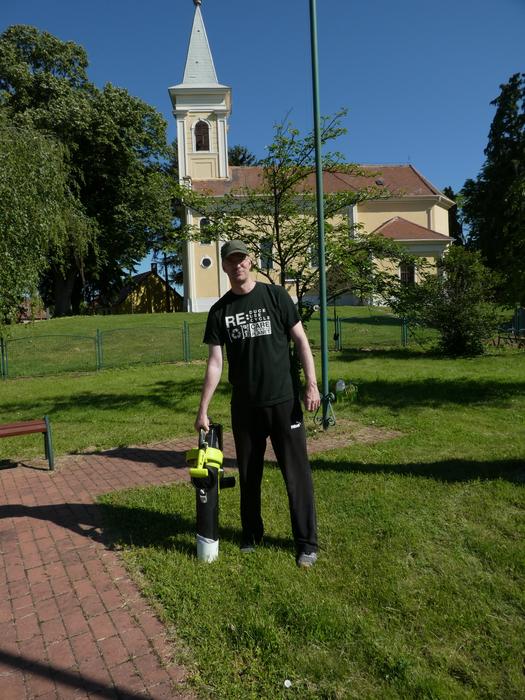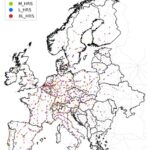
A groundbreaking new study has shed light on the complex interplay between biodiversity and human well-being in European villages, revealing nuanced trade-offs and synergies shaped by landscape context and urban proximity. Despite their long-standing presence as human settlements, villages have been largely overlooked in ecological and socio-economic research compared to forests, urban centers, and agricultural landscapes. This pioneering work, led by an international team centered at the HUN-REN Centre for Ecological Research and involving twenty institutes across Hungary, Romania, Germany, and Italy, takes a holistic approach to unravel the biodiversity potential embedded in rural villages and how various landscape characteristics influence ecological and human prosperity.
The research, recently published in the prestigious journal Nature Sustainability, embarks on an ambitious examination of 64 villages distributed around 16 mid-sized cities across Hungary and Romania. These villages were specifically chosen to represent varying proximity to urban areas—half located near cities and half farther afield—as well as dominant surrounding landscapes that either comprised primarily forested or agricultural ecosystems. Through such a well-structured study design, the research team was able to disentangle the effects of landscape composition and urban adjacency on ecological communities and human living standards.
From a technical standpoint, the biodiversity assessment deployed a multitrophic methodology encompassing nine taxonomic groups and various sampling techniques tailored to distinct ecological niches. Botanical surveys cataloged plant species diversity, while pitfall traps captured ground-dwelling arthropods, and D-vac suction sampling targeted vegetation-inhabiting arthropods, thereby covering a spectrum of invertebrate taxa that contribute significantly to ecosystem functioning. Additionally, trap nests monitored cavity-nesting bees and wasps, reflecting pollinator and predator dynamics vital to both natural and agricultural ecosystems. Bird populations were also surveyed using point counts, filling out the vertebrate perspective in the biodiversity mosaic.
.adsslot_cPlHEejR4J{ width:728px !important; height:90px !important; }
@media (max-width:1199px) { .adsslot_cPlHEejR4J{ width:468px !important; height:60px !important; } }
@media (max-width:767px) { .adsslot_cPlHEejR4J{ width:320px !important; height:50px !important; } }
ADVERTISEMENT
The species inventory produced was striking, documenting an impressive total of 1,164 species, which enabled the researchers to compute multitrophic diversity indices—a comprehensive metric assessing biodiversity across multiple trophic levels. Analytical results indicated a clear pattern: villages situated within forest-dominated landscapes exhibited significantly higher multitrophic diversity, approximately 15% greater than those surrounded by agricultural fields. This finding underscores the critical role that landscape-scale species pools and ecological connectivity play in maintaining rich biodiversity within human-inhabited rural areas. Lead author Dr. Péter Batáry emphasizes that this pattern “highlights the importance of landscape-wide species pools in shaping village-level biodiversity, revealing that the surrounding natural environment is a key driver of ecological richness in rural settlements.”
Interestingly, proximity to urban centers had a surprisingly modest effect on species richness and overall biodiversity. While it might be intuitive to expect urban-associated pressures to degrade biological diversity, the study found that the presence or absence of cities nearby did not significantly reduce species numbers. This suggests that factors beyond mere urban proximity—such as habitat quality, landscape heterogeneity, and land-use practices—exert more substantial influence on village biodiversity patterns, challenging simplistic assumptions about urban sprawl’s ecological impact.
Parallel to ecological surveys, the study also incorporated socio-economic dimensions by collecting data from Hungarian villages to calculate the Better Life Index, an integrative measure reflecting human well-being through parameters such as living conditions, infrastructure quality, and access to services. The data revealed a notable boost in human well-being associated with urban proximity, as villages located within city agglomerations scored 27% higher on the index compared to more remote settlements. Moreover, villages within forest-dominated landscapes enjoyed a 14% increase in this quality-of-life measure relative to those in agricultural areas. Co-author Dr. Katalin Szitár explains, “Villages near cities benefit from enhanced accessibility to services and amenities, while forest-rich surroundings contribute cleaner air and green spaces, creating a dual pathway towards improved well-being.”
To further explore environmental pressures, the researchers harnessed geographic information systems (GIS) to calculate the Human Footprint Index (HFI), which quantifies the impact of human infrastructure and land use on ecosystems. Intriguingly, villages achieving higher Better Life Index scores also tended to exhibit elevated Human Footprint Indices, particularly those closer to urban centers. This finding highlights a critical trade-off: improvements in human living standards can coincide with increases in environmental impacts, emphasizing the delicate balance between development and ecological conservation.
This pattern is further complicated by the observation that higher Human Footprint Indices generally correlated with diminished multitrophic biodiversity, revealing the ecological costs of intensified human activity. However, forest-dominated landscapes appeared more resilient to these pressures, maintaining relatively higher biodiversity levels despite increased human footprint. The implication is that complex, heterogeneous landscapes with significant natural elements can partially buffer the negative effects of human development on biodiversity, supporting the notion that landscape complexity is pivotal in sustaining ecological integrity.
Dr. Edina Török, a co-author of the study, stresses the importance of this balance: “Our findings illuminate the nuanced relationship between human well-being and ecological health in rural contexts, highlighting the necessity for informed management that fosters sustainability without compromising biodiversity.” The study calls attention to the intricacy of managing rural landscapes where social and environmental goals intersect, underscoring the need for integrated, multidimensional approaches.
From a practical perspective, the research offers vital recommendations for sustainable village management. For villages situated near cities, efforts should focus on minimizing soil sealing—a process that degrades natural soil function through surface impermeabilization—and enhancing green infrastructure to mitigate biodiversity loss. For forest-surrounded villages, controlling the expansion of agricultural lands is essential to preserve natural habitats and maintain species pools. The study advocates increased ecological connectivity between village centers and surrounding forests and the implementation of green infrastructure improvements in agricultural settings, strategies that can collectively enhance both biodiversity and human well-being.
Integral to the success of these measures is collaborative governance that brings together residents, landowners, authorities, and policymakers. The researchers emphasize an approach that combines top-down policy directives with bottom-up community engagement to effectively reconcile development and conservation objectives. Dr. Péter Batáry explicitly highlights the strategic importance of the European Union’s Rural Development Strategy, asserting that “prioritizing biodiversity management in policy frameworks is crucial for improving conservation outcomes and landscape quality within and surrounding villages.”
This landmark study sets a new benchmark in rural ecological research, highlighting villages as vibrant arenas where biodiversity and human well-being can coexist in a balanced, albeit complex, relationship. By integrating rigorous ecological surveys with socio-economic analyses and spatial modeling, the research unearths a multifaceted understanding of rural landscapes that challenges conventional narratives and paves the way for more nuanced sustainable development paradigms.
In conclusion, these findings carry significant implications for biodiversity conservation and rural policy. They suggest that preserving and enhancing natural landscape elements within and around villages is indispensable for maintaining ecological diversity, while also fostering human well-being. Yet, this is intrinsically linked to careful management of human activities and infrastructure that can otherwise erode biodiversity. The research advocates a visionary, landscape-integrated framework where social progress does not come at the expense of environmental health, offering an optimistic pathway for rural futures across Europe and beyond.
Subject of Research: Not applicable
Article Title: Biodiversity and human well-being trade-offs and synergies in villages
News Publication Date: 4-Jul-2025
Web References: http://dx.doi.org/10.1038/s41893-025-01592-y
Image Credits: Photo: Attila Torma
Keywords: biodiversity, human well-being, rural villages, forest landscapes, agricultural landscapes, urban proximity, multitrophic diversity, Human Footprint Index, Better Life Index, sustainable rural development
Tags: biodiversity in European villagesbiodiversity trade-offs and synergiesecological communities in rural landscapesecological research in rural areashuman well-being and biodiversityHungary Romania biodiversity researchinterdisciplinary biodiversity studieslandscape context and biodiversityNature Sustainability journal publicationrural village ecological assessmentsocio-economic implications of biodiversityurban proximity effects on ecology



